A Teacher’s Love Letter to ‘Notice and Note’
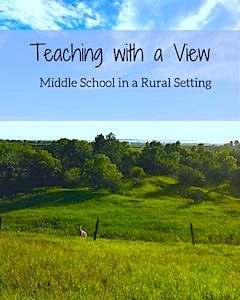
In my late August post, I laid out my plan for reading instruction this year. A month in, I would like to focus in on the wonderful reading strategy developed by Kylene and Bob – Notice and Note – and talk about how I use it in my classroom. It has transformed the way I approach reading instruction, and I hope this post will inspire you to take a look at it as well.
Let’s begin with the basics. Notice and Note: Strategies for Close Reading, for those who have not read the book, provides readers with signposts – tools to help detect moves made by authors that serve as indicators something is happening. The strategies have a strong research base.
Beers and Probst identify six signposts associated with fiction and literature. They’ve also written a book about non-fiction which has its own unique signposts – but what I write here will focus on the six for fiction and some ways I use them in my classroom, from guided practice to independent use through reading response and class discussion.
- Contrast and Contradiction,
- Aha Moments,
- Tough Questions,
- Words of the Wiser,
- Again and Again, and
- Memory Moments.
All signposts assist students in looking at different elements of a story (e.g., conflict, theme) and in making predictions or an inference. Students in my class first learn to simply identify signposts and then they move to application. We do this through using many different forms of text including short stories, picture books, video shorts and novel excerpts.
Part of our class culture
Each year in 7th grade I get to introduce the signposts to a new group of students. To do this I stick very strictly to the text examples supplied by the authors in their amazing book. There are Facebook groups out there and a lot of resources other teachers have crafted, but those are not a replacement for reading this education masterpiece. The example texts (see Companion Resources) are completely accessible for all students and serve as crystal clear examples of how the signposts work. (See these teacher notes from the book site about signposts in Walk Two Moons.)
This year I have students from grades 7 to 9. Some are in their third year of using the signposts with me so we are becoming creative in finding new examples. The online ELA community is super helpful, recommending different novels and picture books that can serve as great examples to share with students as they continue to build their signposting skills.
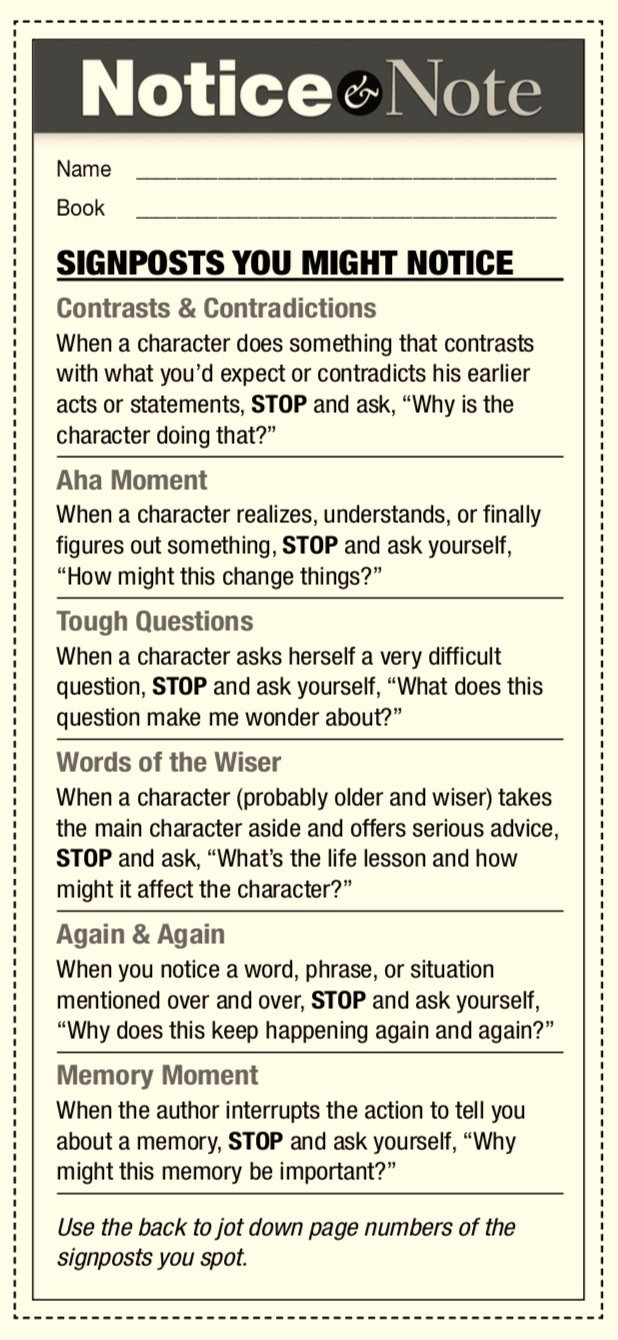
The haunting story of survival at a Residential School in Canada in the tween picture book I Am Not a Number provided my students with opportunities to learn about the tragedy of residential schools as well as practice signposts and reflection around theme and conflict with both Tough Questions and Again and Again throughout the story.
In the end, we use a collection of short stories, picture books and film to practice the work. I stress to my students it is not about how many things we notice but about the thinking that is inspired by our noticing. Our assessments focus on the literary work – the signposts support us, but I don’t assess the student’s signpost reflections themselves.
Today we watched Disney’s The Lion King, not some computer-generated version but the original 1994 multiple award winner. We laughed, we visited, we noticed and noted, and we discussed. The film is full of signposts. We will take our findings, organized as mind maps and then use the signposts and answers to the anchor questions to craft responses around conflict and theme.
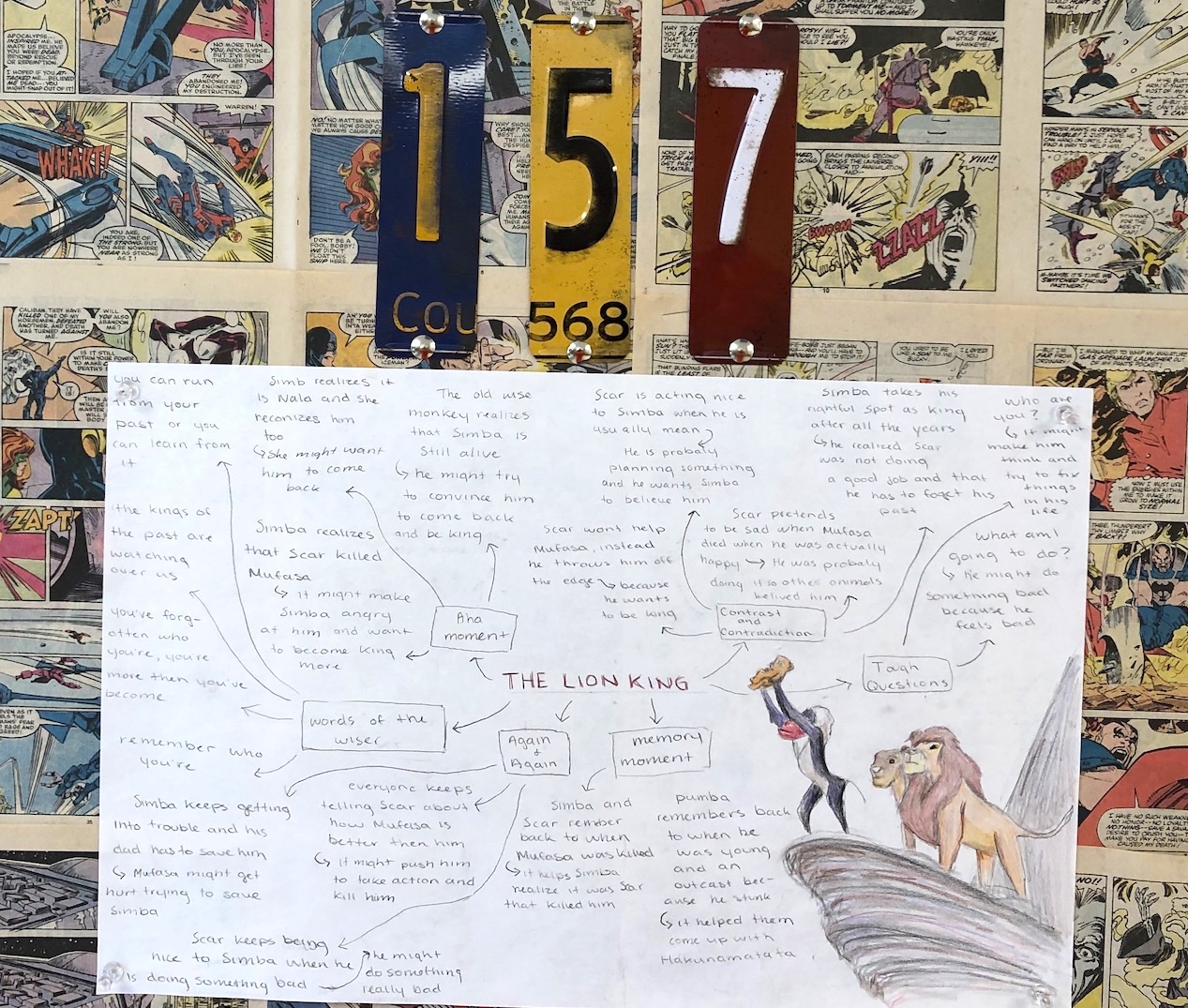
N&N student work on our classroom door [bigger]
Notice & Note is about community
I love Notice & Note. I love the fact that it helps my students become closer readers, but I love even more the sense of community it builds. We read texts together, we share what we find, and we build our understanding as a class. There are not lists to be relied on, no Teachers Pay Teachers nonsense that steals from those who have gifted us with this treasure while lining the pockets of those skilled in devising clip art and designing worksheets.
There are no tests, no scavenger hunts, and no defined number of signposts that students must find and report on. Not everything we do needs to be broken down and forced into some kind of assessment box. There is beauty in the thinking; there is joy in the work.
The Notice & Note I love was created to help students form connections, to have discussion, to access a text that may not have been meaningful to them before. Notice and Note and the signposts are a key to a door that when unlocked gives students access to many more insightful, even life-changing books and stories that are out there waiting in the world.
There is nothing that brings me more joy than the gasps as we read a text in class and a signpost is noticed and a student begins to write in their Notebook. Sometimes I will pause to ask why – to be in that moment with my class. It is a moment in time, not an interruption to our reading but an addition to it.
Just as rigor does not reside in the barbell but in the act of lifting it, rigor in reading is not an attribute of a text but rather of a reader’s behavior – engaged, observant, responsive, questioning, analytical. The close reading strategies…will help you cultivate those critical reading habits to make your students more attentive, thoughtful, independent readers.” — Beers & Probst, The Heinemann Blog, “What Are the Notice and Note Signposts?”
The signposts and Notice & Note also seem to level the playing field of literacy. Students who struggle in the traditional work of reflection are often the ones to notice signposts first. Perhaps it’s because it is a tangible thing they can hold on to – a discovery that guides them toward the less tangible, thought-driven parts.
I don’t know for sure, but I do know that as a teacher I am grateful for these close reading tools, and the chance they give us to work together as we become better readers and in turn writers. I will be eternally grateful for these tools and the educators that created them. I’m also grateful for the many teachers in our professional networks who keep coming up with new and different ways to help our students practice them (#noticeandnote).
If you have any questions about Notice & Note or need some help reaching out to teachers already doing the work, please leave a comment or get in touch @mrbgilson. Notice & Note builds a community of readers and thinkers that extends far beyond our classroom walls, and that community includes not only our students but ourselves.
CREDIT: Feature image of 6 signposts – Tricia Barvia

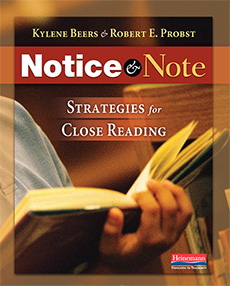
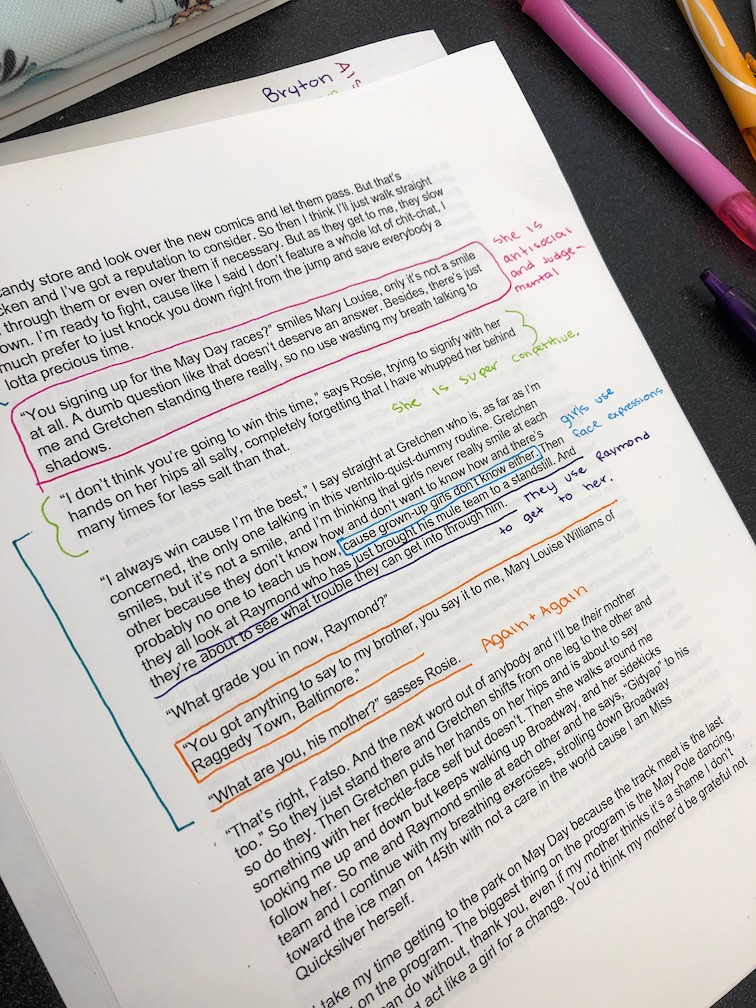

































Thanks for including my blog. I too agree about community. Since I began working on my classroom library, my classroom community has grown. It is hard to articulate, but my students huddle around our books and exchange ideas. The books really center the classroom environment.
Good read!
Love the process that you identified:
1. Identify the signposts.
2. Apply the signposts to thinking.
3. Dig into deeper meanings with writing, discussion, etc.
:-)
Great post, Brent! This is exactly how I’ve used the Notice and Note signposts as well for the last several years. They do bring joy to the learning and make it accessible to all! They make it more about the process and less about adding points to a grade book. Using the signposts has completely transformed my teaching, as I know it has for you. Keep spreading the word!
I love “Notice and Note” as well. Was first introduced to it as a student teacher in 7th grade ELA (in a small rural district) shortly after it came out. I’ve used it ever since, including, with some modifications in terms and questions, in high school acting classes.
Great post! I’d love to see one on the nonfiction Notice & Note too!
Hello. I have always been interested in reading Notice and Note. I work as an interventionist and we use it across our program. Today was a great moment. I was introducing the signposts to my students. They were engaged in identifying three of the posts and agreeing on each other’s answers. Well, they disagreed about a couple of the passages. They had a lively debate while headed back to their regular classes. It was a great moment.
Ooops! I forgot my question. Could a passage represent two of the signposts? They would make my students very happy.
I love notice and note, I love the simplicity of the anchor questions. I work in the ESOL department and I am looking for a way to show my supervisor that Notice and Note both fiction and nonfiction are strategies we should use to teach our students next year, especially that our state standards are changing. I think Notice and Note is a great complement to this change. I would like to have some testimonials or artifacts of how Notice and Note changed your teaching or changed the academic rigor and conversation for your students.
I will be teaching ELA for the 1st time this year and I am working on planning for my class. As a way to help my Resource ELA classroom, I enrolled in a course about Strategies for Close Reading using the Notice and Note book. I am looking for ideas for classroom novels that would be good for 7th and 8th grade students who may read as low as 2nd grade.
Renee – We don’t have a specific list of books here at MiddleWeb, although it’s a great topic and we’ll work on that. Meanwhile, this article at the Scholastic site identifies some of their books that might fit the bill: https://www.scholastic.com/parents/books-and-reading/raise-a-reader-blog/high-interest-books-struggling-middle-school-readers.html
Hi Renee, I would check out Titles like Restart by Gordon Korman. It is excellent for Notice and Note practice, but most novels have many Signposts. Read through on your own and highlight what you notice, the kids will find different things and sometimes the same and that is part of the fun in the discussions.